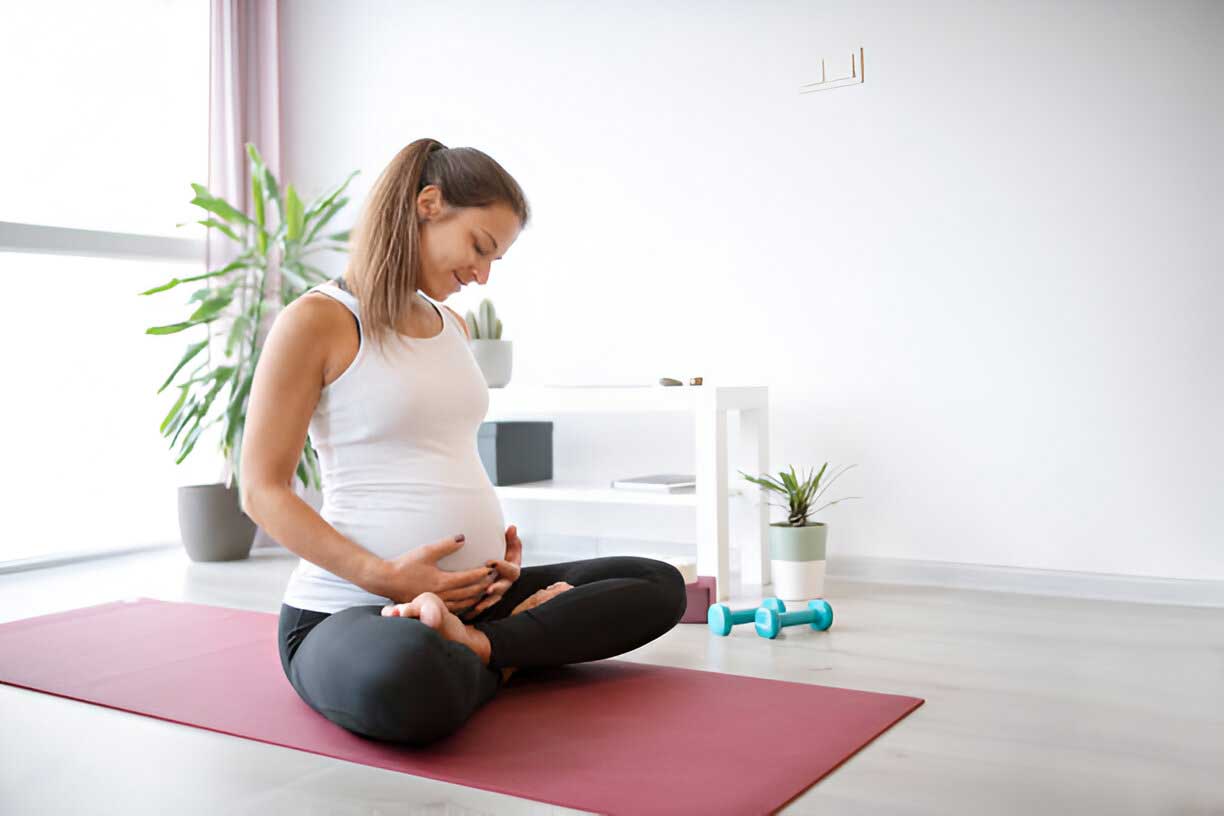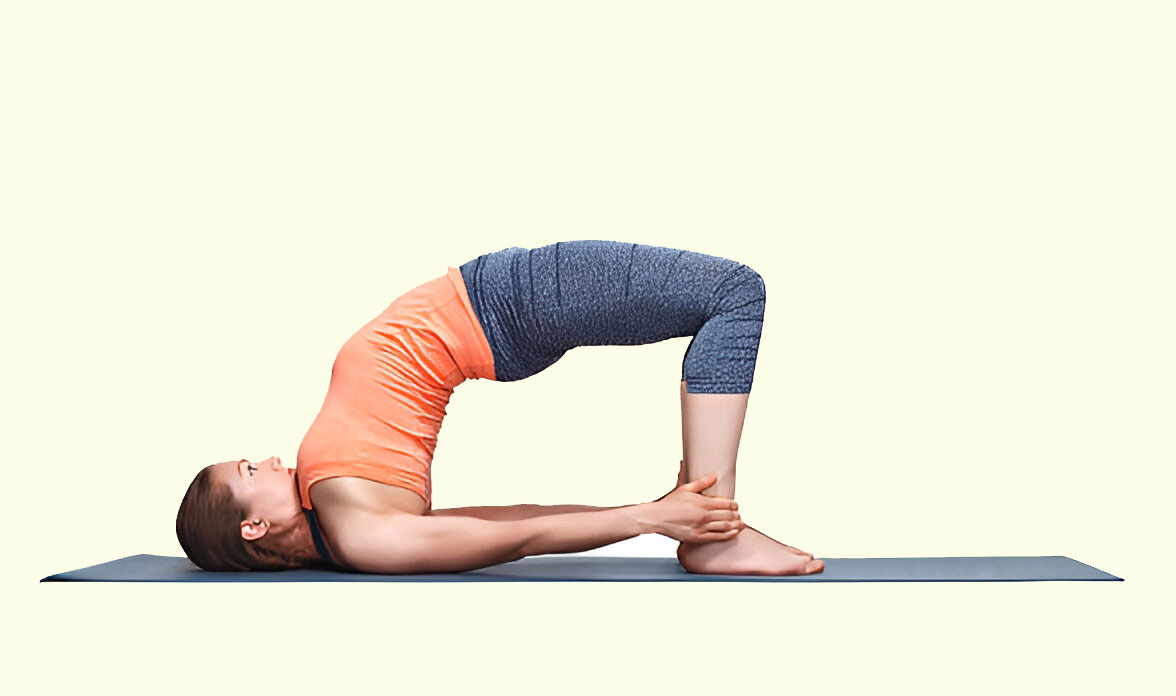Can Yoga Help with Fertility Issues?
Fertility issues affect millions of people worldwide, creating emotional and physical stress for those trying to conceive. While medical treatments such as in vitro fertilization (IVF) and fertility drugs are common solutions, many couples explore complementary therapies to support their fertility journey. Yoga, an ancient practice that combines physical postures, breath control, and meditation, offers a holistic approach to enhancing fertility. This article explores how yoga can help with fertility issues, including possible treatment options to complement your yoga practice.
The Connection Between Yoga and Fertility
Yoga benefits fertility through various mechanisms that involve both physical and mental aspects of health. These mechanisms include:
- Reducing Stress: Stress is a significant factor in fertility issues, as it can disrupt hormonal balance and ovulation. Yoga reduces stress by activating the parasympathetic nervous system, promoting relaxation, and lowering cortisol levels.
- Balancing Hormones: Hormonal imbalances can affect fertility by disrupting the menstrual cycle and ovulation. Yoga helps regulate the endocrine system, promoting hormonal balance and improving reproductive health.
- Improving Circulation: Adequate blood flow to the reproductive organs is essential for fertility. Yoga enhances circulation, ensuring that the ovaries, uterus, and other reproductive organs receive sufficient oxygen and nutrients.
- Supporting Detoxification: The body’s natural detoxification processes are crucial for reproductive health. Yoga stimulates the lymphatic system, aiding in the removal of toxins and supporting overall fertility.
- Enhancing Mind-Body Connection: Yoga promotes mindfulness and emotional well-being, which are essential for a positive fertility journey. A strong mind-body connection can improve your chances of conception by reducing anxiety and promoting relaxation.
Yoga Poses That Support Fertility
Certain yoga poses, known as asanas, are particularly effective for supporting fertility. These poses target different aspects of reproductive health, including circulation, hormonal balance, and stress reduction. Here are some of the most effective yoga poses for enhancing fertility:
1. Bound Angle Pose (Baddha Konasana)
Bound Angle Pose is a seated yoga posture that opens the hips and improves circulation to the pelvic region. This pose helps stimulate the reproductive organs, promoting hormonal balance and supporting fertility.
How to Perform:
- Sit on the floor with your legs extended in front of you.
- Bend your knees and bring the soles of your feet together, allowing your knees to drop to the sides.
- Hold your feet with your hands and gently press your knees toward the floor.
- Hold this pose for 1-3 minutes, breathing deeply and focusing on the stretch in your hips and groin.
Benefits:
- Improves circulation to the pelvic region
- Stimulates the reproductive organs
- Promotes hormonal balance
2. Legs Up the Wall Pose (Viparita Karani)
Legs Up the Wall Pose is a restorative yoga exercise that helps improve circulation to the pelvic region and promotes relaxation. This pose is particularly beneficial for reducing stress and supporting fertility.
How to Perform:
- Sit close to a wall with your knees bent and feet on the floor.
- Lie back and swing your legs up the wall, resting your arms at your sides.
- Hold this pose for 5-10 minutes, breathing deeply and allowing your body to relax.
Benefits:
- Improves circulation to the reproductive organs
- Promotes relaxation and stress relief
- Supports hormonal balance
3. Bridge Pose (Setu Bandhasana)
Bridge Pose is an effective yoga exercise for strengthening the lower back and core muscles. This pose also helps stimulate the endocrine system, promoting hormonal balance and supporting reproductive health.
How to Perform:
- Lie on your back with your knees bent and feet flat on the floor, hip-width apart.
- Place your arms alongside your body, palms facing down.
- Inhale and lift your hips toward the ceiling, pressing your feet and arms into the floor.
- Hold this pose for 30 seconds to 1 minute, then slowly lower your hips back to the floor.
Benefits:
- Stimulates the endocrine system
- Promotes hormonal balance and reproductive health
- Enhances circulation to the pelvic region
4. Cobra Pose (Bhujangasana)
Cobra Pose is a gentle backbend that strengthens the spine and stimulates the reproductive organs. This pose helps improve circulation to the uterus and ovaries, supporting fertility.
How to Perform:
- Lie face down on the mat with your legs extended and feet together.
- Place your hands under your shoulders, elbows close to your body.
- Inhale and lift your chest off the mat, keeping your lower ribs on the floor.
- Hold this pose for 15-30 seconds, then slowly lower yourself back down.
Benefits:
- Improves circulation to the reproductive organs
- Supports hormonal balance and fertility
- Strengthens the spine and core muscles
5. Reclining Bound Angle Pose (Supta Baddha Konasana)
Reclining Bound Angle Pose is a restorative yoga posture that gently opens the hips and improves circulation to the pelvic region. This pose promotes relaxation and supports reproductive health.
How to Perform:
- Lie on your back with your knees bent and feet flat on the floor.
- Bring the soles of your feet together, allowing your knees to drop to the sides.
- Rest your arms at your sides, palms facing up.
- Hold this pose for 5-10 minutes, breathing deeply and allowing your body to relax.
Benefits:
- Opens the hips and improves circulation
- Promotes relaxation and stress relief
- Supports reproductive health and fertility
6. Seated Forward Bend (Paschimottanasana)
Seated Forward Bend is a calming yoga pose that stretches the entire back, including the spine and reproductive organs. This pose helps reduce stress, calm the mind, and improve circulation to the pelvic region.
How to Perform:
- Sit on the floor with your legs extended in front of you.
- Inhale and lengthen your spine, reaching your arms overhead.
- Exhale and hinge at your hips, reaching for your feet or shins.
- Hold this pose for 1-2 minutes, breathing deeply and relaxing into the stretch.
Benefits:
- Reduces stress and calms the mind
- Improves circulation to the reproductive organs
- Enhances reproductive health and fertility
7. Cat-Cow Pose (Marjaryasana-Bitilasana)
The Cat-Cow Pose is a gentle, flowing movement that stretches and loosens the muscles in the spine and pelvic region. This pose improves spinal flexibility, relieves tension, and supports reproductive health.
How to Perform:
- Start on all fours with your wrists under your shoulders and your knees under your hips.
- Inhale and arch your back, lifting your head and tailbone toward the ceiling (Cow Pose).
- Exhale and round your spine, tucking your chin to your chest (Cat Pose).
- Continue this flow for 1-2 minutes, synchronizing your breath with your movements.
Benefits:
- Improves spinal flexibility and alignment
- Relieves tension in the pelvic region
- Supports reproductive health and fertility
The Role of Pranayama in Fertility
Breath control, or pranayama, is an integral part of yoga that supports fertility by reducing stress, improving circulation, and enhancing oxygenation of the reproductive organs. Practicing pranayama regularly can calm the mind, promote relaxation, and support overall fertility.
Effective Pranayama Techniques for Fertility:
- Nadi Shodhana (Alternate Nostril Breathing): This technique balances the body’s energy channels, reduces stress, and promotes relaxation by calming the nervous system.
- Ujjayi (Ocean Breath): This technique involves slow, deep breathing with a slight constriction of the throat, creating a soothing sound that calms the nervous system.
- Bhramari (Bee Breath): This technique involves making a humming sound during exhalation, which helps calm the mind and nervous system.
How to Perform Pranayama:
- Nadi Shodhana: Sit comfortably and close your right nostril with your thumb. Inhale deeply through your left nostril, then close it with your ring finger. Exhale through your right nostril. Continue alternating nostrils for 5-10 minutes.
- Ujjayi: Sit comfortably and take a deep breath in through your nose. Exhale slowly through your nose while slightly constricting your throat to create a soft, ocean-like sound. Continue this deep, rhythmic breathing for 5-10 minutes.
- Bhramari: Sit comfortably and take a deep breath in through your nose. Exhale slowly, making a humming sound like a bee. Continue this practice for 5-10 minutes, focusing on the calming vibrations.
Meditation and Fertility
Meditation is another crucial aspect of yoga that benefits fertility. Regular meditation practice helps reduce stress, improve mental clarity, and promote emotional balance. A calm and balanced mind supports fertility by reducing the production of stress hormones that can disrupt hormonal balance and ovulation.
Meditation Techniques for Fertility:
- Mindfulness Meditation: Focus on your breath and observe your thoughts without judgment. Practice this for 10-15 minutes daily to reduce stress and support fertility.
- Loving-Kindness Meditation: Focus on sending positive thoughts and intentions to yourself and others. This practice promotes emotional balance and enhances overall well-being, supporting fertility.
- Guided Imagery: Visualize a peaceful place or scenario that brings you calm and relaxation. This technique enhances the mind-body connection and supports fertility by reducing stress and promoting relaxation.
Diet and Fertility
While yoga offers significant benefits for fertility, its effects can be enhanced by a balanced, nutrient-rich diet. Consuming foods high in vitamins, minerals, and antioxidants supports reproductive health and helps the body manage stress.
Foods to Include:
- Leafy Greens: Rich in folate, which supports reproductive health and hormonal balance.
- Omega-3 Fatty Acids: Found in fish, flaxseeds, and walnuts, omega-3s support reproductive health and reduce inflammation.
- Berries: High in antioxidants that protect the reproductive system from oxidative stress.
- Nuts and Seeds: Rich in magnesium, which helps calm the nervous system and support hormonal balance.
Foods to Avoid:
- Processed Foods: High in sugar and unhealthy fats, which can impair reproductive health.
- Caffeine: Excessive consumption can increase stress levels and disrupt hormonal balance.
- Sugary Foods: High sugar intake can lead to energy crashes and irritability, affecting reproductive health.
Possible Treatment Options to Support Fertility
In addition to yoga, other treatments can support fertility and enhance overall reproductive health. These treatments can be integrated into a comprehensive wellness routine to optimize fertility.
1. Acupuncture
Acupuncture is a traditional Chinese medicine technique that involves inserting thin needles into specific points on the body. This treatment is believed to stimulate the flow of energy (Qi) and support reproductive health.
Benefits:
- Enhances reproductive health and fertility
- Reduces stress and anxiety
- Promotes relaxation and hormonal balance
2. Massage Therapy
Massage therapy promotes relaxation, reduces stress, and stimulates circulation. Regular massage therapy can support fertility by enhancing lymphatic drainage and promoting overall well-being.
Benefits:
- Reduces stress and anxiety
- Enhances circulation and lymphatic flow
- Supports reproductive health and fertility
3. Herbal Supplements
Certain herbal supplements can support reproductive health by providing essential nutrients and promoting overall well-being. These supplements are often used in conjunction with a balanced diet and regular yoga practice to enhance fertility.
Common Fertility-Supporting Supplements:
- Maca Root: An adaptogenic herb that supports hormonal balance and reproductive health.
- Vitex (Chasteberry): A herb that regulates the menstrual cycle and supports hormonal balance.
- Ashwagandha: An adaptogenic herb that reduces stress and supports reproductive health.
Consult a healthcare provider before starting any supplement regimen.
4. Sauna Therapy
Sauna therapy promotes detoxification by inducing sweating, which helps eliminate toxins and support reproductive health. Infrared saunas are particularly effective, as they penetrate deeper into the tissues, enhancing the detoxification process and supporting fertility.
Benefits:
- Supports detoxification
- Promotes relaxation and stress reduction
- Enhances circulation and reproductive health
Incorporating Yoga into a Fertility-Supporting Routine
To maximize the benefits of yoga for fertility, it’s important to incorporate it into a well-rounded wellness routine. This routine should include regular yoga practice, a balanced diet, adequate hydration, and possibly additional treatments like acupuncture or massage therapy.
Sample Daily Fertility-Supporting Routine:
- Morning:
- Start with a glass of warm lemon water to stimulate digestion and support reproductive health.
- Practice a gentle yoga routine, focusing on poses that enhance circulation and relaxation.
- Eat a nutrient-rich breakfast, such as a smoothie with leafy greens, berries, and nuts.
- Afternoon:
- Incorporate light physical activity, such as walking or swimming, to keep the lymphatic system active.
- Enjoy a lunch rich in fertility-supporting foods, such as fish, leafy greens, and nuts.
- Stay hydrated by drinking water or herbal teas.
- Evening:
- Practice a restorative yoga routine, focusing on poses that promote relaxation and stress relief.
- Enjoy a light dinner, avoiding processed foods and excessive sugar.
- Consider taking a fertility-supporting supplement, if recommended by a healthcare provider.
- Bedtime:
- Perform a short meditation or mindfulness practice to reduce stress and promote relaxation.
- Get adequate sleep, as the body’s reproductive system functions most effectively during rest.
Conclusion
Yoga offers a natural and effective way to support fertility, offering a holistic approach that enhances physical, mental, and emotional well-being. Through specific poses, breath control, and meditation, yoga supports the body’s reproductive health by promoting better circulation, hormonal balance, and stress reduction. When combined with a balanced diet, proper hydration, and additional treatments like acupuncture or massage therapy, yoga can play a central role in maintaining optimal fertility.
Whether you’re looking to enhance your chances of conception, improve your overall reproductive health, or reduce stress, incorporating yoga into your daily routine can provide lasting benefits. With consistent practice and a mindful approach, yoga can become a powerful tool in your journey toward a healthy, balanced, and fertile life.








